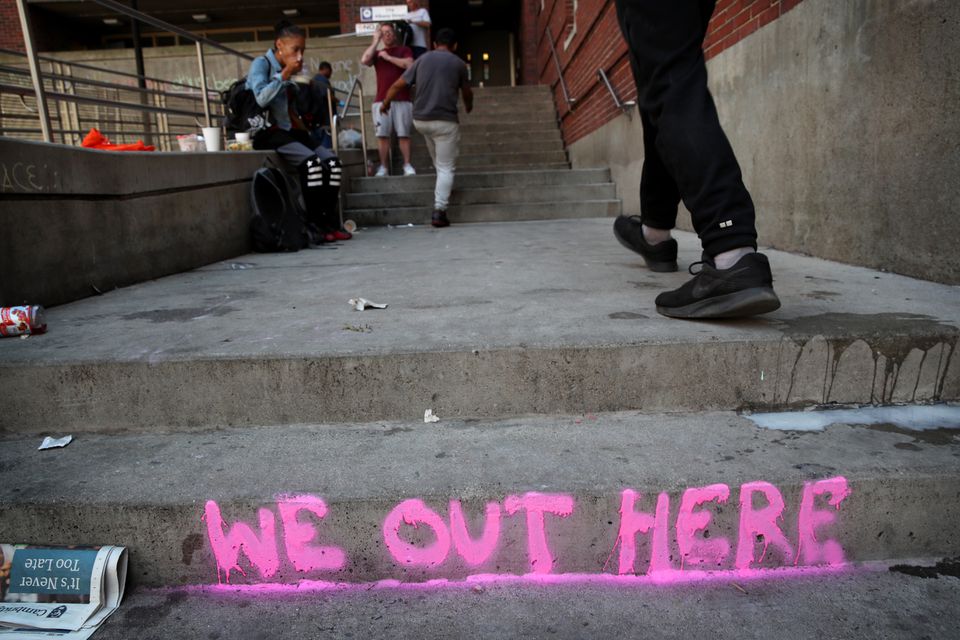
By Milton J. Valencia Globe Staff
Acknowledging a worsening opioid epidemic taking hold in the city, Mayor Martin J. Walsh’s administration is set Friday to launch Mass and Cass 2.0, a plan that would double-down on efforts to remove needles from city streets, and pair police officers with additional outreach workers, putting more “boots on the ground” to ease tensions in a neighborhood hardest hit by drug addiction.
In a briefing with reporters, city officials said the plan will boost resources for an array of services in the area around the intersection of Massachusetts Avenue and Melnea Cass Boulevard, where a close concentration of treatment providers has oversaturated the neighborhood with drug addicts seeking services and drug dealers coming to prey on them. The area has come to be known disparagingly as Methadone Mile.
Many of the services in the new plan already exist, but will be bolstered, with better monitoring and coordination among the different departments that play a role, said Marty Martinez, the city’s chief of health and human services.
That means residents can expect to see more city workers, with three additional police officers — bringing the total to five — reassigned from the local precinct to partner with outreach workers from local shelters to stop open-air drug use while steering addicts to recovery programs. The administration will expand needle exchange programs and increase the number of workers who comb city streets and playgrounds looking for dirty, discarded needles.
Meanwhile, the city will install new lighting in the area. And it will erect neighborhood welcoming signs and a kiosk to remind passersby — those seeking services in the area, those already there working — that they are in Newmarket Square, part of an effort to preserve the neighborhood identity.
The plan is a more deliberate response than Operation Clean Sweep, the police sting in August that drew criticism from social-service advocates for what they called a heavy-handed, law-enforcement-centered approach to arrest people in need of public health services.
Martinez said the new, tweaked plan is meant to enhance and balance all areas of service, from law enforcement actions to public health outreach, and efforts to preserve quality of life for those already living and working in the area.
“What you’re seeing is more boots on the ground, more engagement, and more folks getting people connected to care,” he said. “This plan is really about decreasing criminal activity, getting people on a pathway to care, and increasing quality of life.”
Walsh said in a statement that the new plan will help “make the needed improvements for those who are struggling: Those with a substance use disorder, and the residents impacted by this epidemic throughout Boston’s neighborhoods. There is not one perfect solution to dealing with this crisis, but we are committed to doing everything we can.”
Tensions around the intersection, mainly in the city’s South End neighborhood, have been simmering for years as a regional opioid epidemic has brought an influx of people seeking services to the area. Health care providers, including Boston Medical Center, offer services there, and the city’s only needle exchange program is located a block away.
Over the last year, however, local residents and businesses say problems of drug dealing and open-air drug use have intensified, as the introduction of new drugs, mainly fentanyl and methamphetamine, have worsened users’ addiction.
Residents and business owners have complained of users openly shooting up on their front stoops or defecating in their back yards. Users have camped out in historic squares and bathed in fountains. Police reported a 37 percent increase in violent crime over the last year.
City officials said Thursday that law enforcement action will continue, pointing to the recent jump in violent crime in the area. More police officers will be assigned to patrol the area on foot and on bikes, and the drug control unit will target drug dealers. At the same time, the department will reassign three additional officers and a sergeant to the area to focus on street outreach and steer people to treatment.
“We’re going out to the community, we’re meeting them where they are, and we’re trying to provide the resources that will get them off the street long term,” said police Deputy Superintendent Michael Stratton, who will oversee police efforts in the area.
The broader plan includes increasing overdose prevention training and the distribution of clean syringes; boosting the number of street outreach workers to 14; and raising the number of people placed in treatment each month.
Meanwhile, the city will increase the Mobile Sharps Team, which picks up syringes in neighborhoods, from four to eight members, and create incentives for users to return syringes — part of an effort to make sure they do not end up in streets or playgrounds. The Department of Public Works will assign a team to the area to help with street cleaning and other operations.
The city will look to better coordinate and monitor those efforts: The city for the first time will post data on a publicly accessible dashboard that will track efforts to steer people to treatment and to target crime in the area. A new 24-person task force made up of public officials, businesses, residents, and advocates, including people who have experienced addiction firsthand, will monitor the dashboard and ways to adjust the plan, Martinez said.
